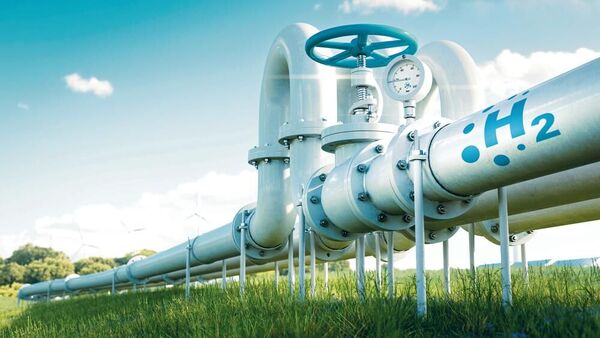We are already seeing the consequences of global warming: Rising frequency of storms, floods and droughts; the adverse impact on agricultural production; loss of biodiversity; retreating glaciers, melting arctic ice, dying coral reefs and rising sea levels. The window of opportunity to avert the disastrous consequences of global warming beyond 1.5° Celsius above pre-industrial levels is rapidly closing. Some projections indicate that average temperatures are likely to rise well above 1.5° unless much more is done within the next 3-5 years to contain global warming (see Atul Bagai & Sudipto Mundle, Hindustan Times 26 April 2023). Fortunately, there has also been phenomenal progress in mitigation technologies. However, there are large variations in adoption across sectors and geographies even for mitigation technologies that are now commercially viable, mainly due to paucity of finance. Large amounts of capital are required to adopt these technologies at scale, but access to such finance is limited or altogether missing in many countries.
Among mitigation technologies, the most advanced is renewable power: solar, wind, etc, in addition hydropower, the original renewable. The cost of solar panels, wind turbines, storage batteries and other components have declined dramatically, such that the cost of renewable power is now comparable to fossil-fuel based power. Consequently, renewable power projects are now being rolled out at scale. Despite this, renewable energy still accounts for only around 15% of global power generation. Next, there is green hydrogen. Extracted by breaking down water molecules into hydrogen and oxygen through electrolysis, hydrogen has wide applications in hard to electrify sectors like heavy industries, shipping, air transport, etc. Hydrogen extracted using renewable power is green hydrogen. Apart from the power source, the cost of green hydrogen has been dependent on the cost of electrolyzers, which has been very high. As these costs have come down, green hydrogen has become commercially viable and is now attracting large-scale corporate investment, including in India. However, the rollout of green hydrogen at scale is just starting.
Third, we have carbon capture and sequestration (CSS). Renewable power and green hydrogen can minimize new carbon emissions but they cannot reduce the CO2 already suspended in the atmosphere, which accounts for the rising frequency of extreme weather events. To address this we need ‘carbon negative’ technologies to capture the carbon and store them till they can be broken down for commercial use. Existing CSS technologies are very expensive. Much investment is required in research & development (R&D) to reduce costs before CSS technologies become commercially viable.
The fourth group of technologies, still mostly experimental, replicate and improve ‘technologies’ available in nature to capture carbon from the atmosphere and use it productively. Plants use ‘photosynthesis’ to feed on CO2 captured from the atmosphere, while releasing oxygen in exchange. Terrestrial and under water forests are the natural ‘carbon sinks’ that contain the carbon load in the atmosphere. But the level of emissions has gone far beyond the capacity of natural ‘carbon sinks’ to absorb the additional carbon load. Huge R&D investment is required to develop technologies to synthetically replicate and enhance the capacity of natural carbon sinks multiple times to reduce the ambient carbon load and eventually reverse global warming.
The key takeaway from the foregoing is that vast amounts of capital are required to successfully address the climate crisis. Investment is required primarily for R&D in CSS technology and synthetic replication of natural carbon sinks and also to roll out renewable energy and green hydrogen projects at scale. Indeed, these projects are already being rolled out, but not at anywhere near the scale required to contain and eventually reverse global warming. The United Nations Environment Program Emissions Gap Report 2022 estimates that current annual investment in climate finance of about $571 billion needs to rise to at least $1.7-2 trillion.
How can this be financed? Global public sector finance is an obvious option to finance a global public good. However, discussions following the report of the G20-appointed Independent Committee to Review the Multilateral Development Banks’ (MDBs) Capital Adequacy Framework indicate that MDBs may at best generate additional assistance of $1 trillion for all purposes, including climate finance. There is much scepticism even about this amount. The alternative is private capital, a stock which is estimated to be growing by about $15 trillion annually. However, most of this capital originates in advanced countries and would not readily flow to tropical developing countries that have the greatest potential for renewable power generation.
Inducing private capital flows towards climate finance in developing countries will require, first, the creation of a suitable ecosystem including universally accepted concepts, definitions and standards for climate finance, appropriate rating systems and technical assessment methodologies (see Ajay Sagar, Business Standard 27 March 2023). Second, it will require considerable de-risking of such private capital flows, along with its attendant moral hazard (V. Anantha Nageswaran, Mint, 11 April, 2023). MDBs can play a crucial role here despite their limited resources by providing credit guarantees (Ajay Chibber, Atlantic Council, 17 October 2022). That way, their own investments can be leveraged 10-20 times to mobilize private capital while minimizing the moral hazard of de-risked private investment through their own due diligence.
Sudipto Mundle is chairman, Centre for Development Studies. These are the author’s personal views.
Download The Mint News App to get Daily Market Updates.
More
Less
#Finance #binding #constraint #efforts #fight #climate #change
